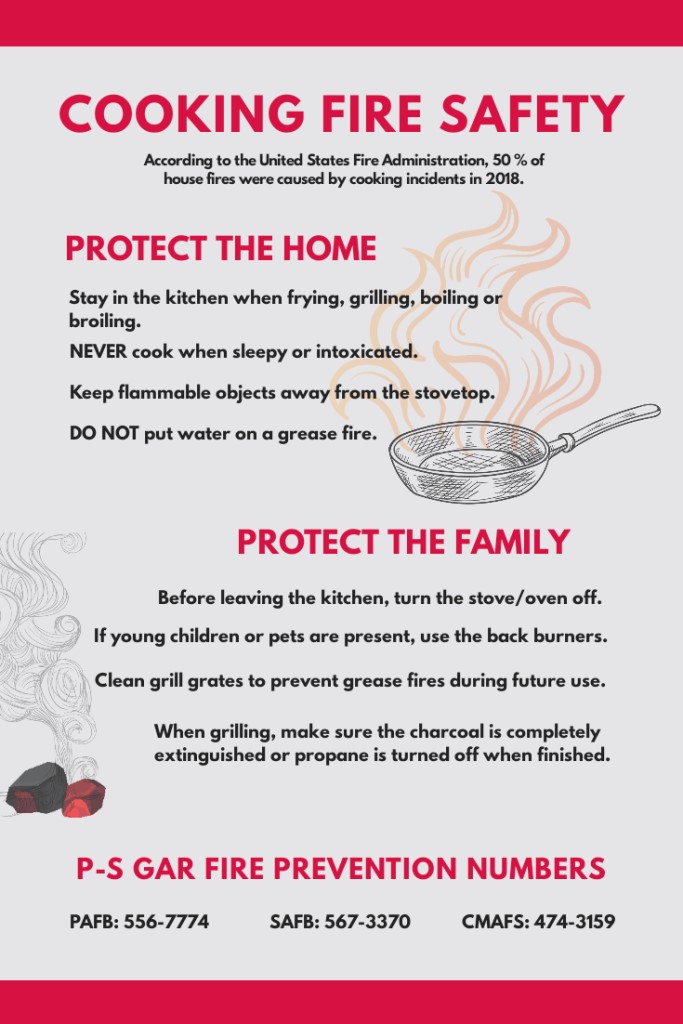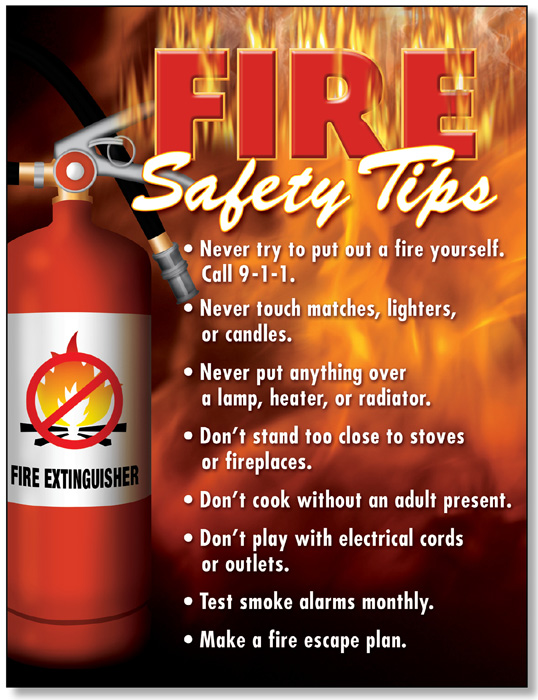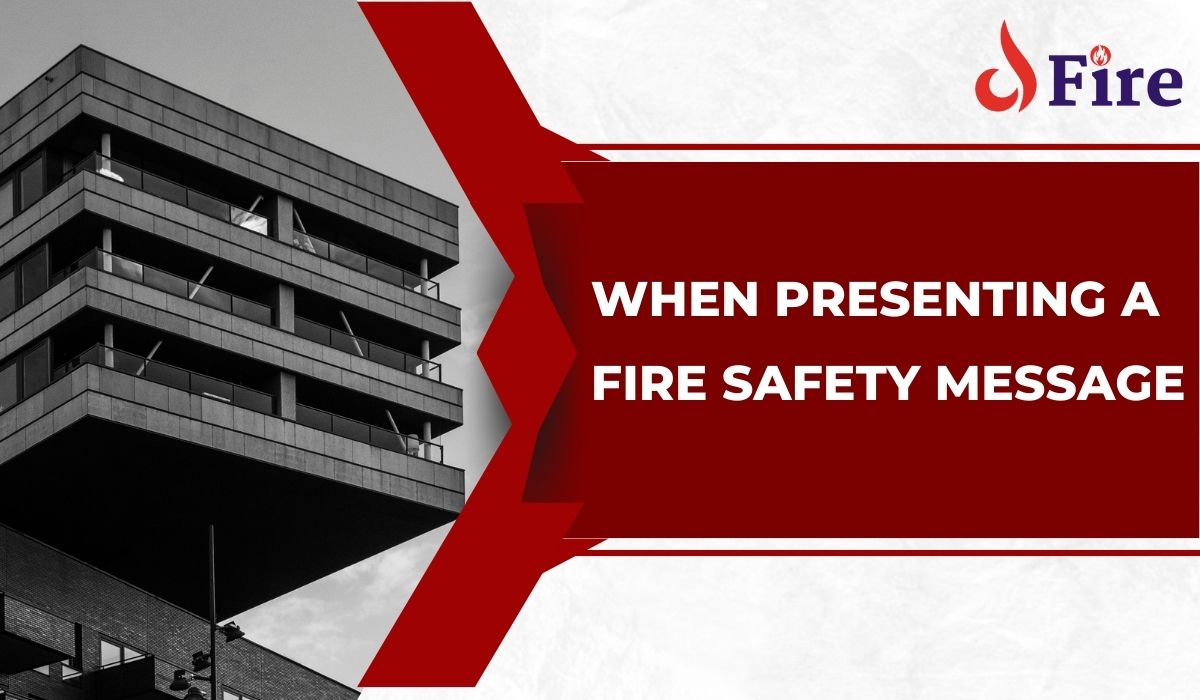Ensure you know your fire escape routes and keep a fire extinguisher accessible. Practice fire drills regularly.
Fire safety is critical for protecting lives and property. Understanding basic fire safety measures can prevent devastating incidents. Knowing your fire escape routes and having a functional fire extinguisher are essential steps. Regular fire drills help everyone stay prepared in case of an emergency.
Educate your family and colleagues on how to respond quickly and safely. Proper fire safety education reduces panic and saves lives. Keep flammable materials away from heat sources and ensure smoke alarms work properly. Practicing these safety tips creates a safer environment. Always stay vigilant and proactive about fire safety measures. By doing so, you minimize the risk of fire-related accidents.
Crafting The Message
Delivering an effective fire safety message requires careful planning. The message must be clear and easily understood. Let’s dive into how to craft such a message.
Know Your Audience
Understanding your audience is crucial. Tailor your message to their needs.
- Children: Use simple words and colorful visuals.
- Adults: Provide detailed instructions and statistics.
- Elderly: Use larger fonts and clear language.
Knowing the audience ensures the message resonates. Different groups need different approaches.
Simplify The Language
Simple language makes the message accessible. Avoid technical terms and jargon.
| Complex Term | Simple Term |
|---|---|
| Evacuation | Leave the building |
| Fire Extinguisher | Fire spray |
Use short sentences and direct instructions. This ensures everyone understands the safety message.
- Check smoke alarms every month.
- Plan two escape routes from each room.
- Teach children how to call 911.
Clear, concise language saves lives. Make every word count.

Credit: www.nellis.af.mil
Using Visual Aids
Using visual aids can significantly enhance your fire safety message. They make complex information simple and engaging. Visual aids help maintain the audience’s attention and ensure better understanding. This section explores two effective visual aids: diagrams and videos.
Incorporate Diagrams
Diagrams are powerful tools for conveying fire safety information. They can illustrate escape routes, fire extinguisher locations, and safe meeting points.
- Fire Escape Plans: Use clear diagrams to show exit routes.
- Fire Extinguisher Locations: Mark all extinguisher spots on the map.
- Meeting Points: Highlight safe areas where everyone should gather.
Ensure your diagrams are easy to understand. Use simple symbols and clear labels. Color coding can also be helpful. Red for danger, green for safe zones, and blue for water sources.
Employ Videos
Videos can make fire safety training engaging and memorable. They can demonstrate evacuation procedures and proper use of fire equipment.
- Evacuation Procedures: Show step-by-step evacuation processes.
- Using Fire Extinguishers: Demonstrate how to operate different types of extinguishers.
- Real-life Scenarios: Present real-life fire situations and responses.
Ensure videos are short and to the point. Use clear narration and visuals. Include captions for better understanding.
| Visual Aid | Benefits |
|---|---|
| Diagrams | Easy to understand, quick reference, visually engaging |
| Videos | Interactive, memorable, demonstrates real-life scenarios |
Engaging The Audience
When presenting a fire safety message, engaging the audience is crucial. An attentive audience absorbs information better. Use interactive methods to make your message memorable. Encourage participation to keep everyone involved. Below are effective strategies to engage your audience.
Interactive Sessions
Interactive sessions are key to engaging the audience. Use hands-on activities to illustrate fire safety principles.
- Conduct live demonstrations of using a fire extinguisher.
- Organize fire drills to practice evacuation routes.
- Use role-playing scenarios to teach safety protocols.
These activities make the session lively and informative. They help the audience remember important safety tips.
Q&a Segments
Q&A segments are an excellent way to engage the audience. Allocate time for questions at the end of your presentation.
- Invite questions related to fire safety.
- Provide clear and concise answers.
- Encourage everyone to participate.
This allows the audience to clarify doubts. It ensures everyone leaves with a clear understanding of fire safety.
| Engagement Method | Benefit |
|---|---|
| Interactive Sessions | Hands-on learning, memorable experience |
| Q&A Segments | Clarifies doubts, encourages participation |
Incorporate these strategies to deliver an engaging fire safety message.
Highlighting Key Points
When presenting a fire safety message, highlighting key points ensures the audience remembers critical information. Effective communication techniques play a crucial role. Let’s explore some methods to emphasize essential details.
Repetition Techniques
Repetition helps embed key information in the audience’s memory. Use these strategies:
- Reiterate Main Points: Repeat the most important facts several times.
- Use Catchphrases: Create memorable slogans for critical instructions.
- Visual Aids: Reinforce messages with visual cues like posters or slides.
Summarize Critical Information
Summarizing ensures the audience retains the most vital points. Consider these tips:
- End with a Summary: Conclude your talk with a brief recap.
- Highlight in Handouts: Provide written summaries for later reference.
- Use Bullet Points: Present summaries in simple, easy-to-read formats.
| Technique | Description |
|---|---|
| Repetition | Repeat key points to enhance memory retention. |
| Summarization | Condense information into digestible summaries. |
Using these methods, you can effectively highlight the key points in your fire safety message. This ensures your audience retains and applies critical information in emergencies.
Emphasizing Safety Protocols
Teaching fire safety is important. Emphasizing safety protocols ensures everyone stays safe. Below, we discuss emergency exits and fire extinguisher use.
Emergency Exits
Knowing where emergency exits are can save lives. Emergency exits should be easy to find. Mark all exits with bright signs.
- Exits must be clear of obstructions.
- Doors should open easily.
- Practice using exits during drills.
Use a map to show exit routes. Post maps in visible places. Make sure everyone knows the quickest way out.
Fire Extinguisher Use
Fire extinguishers can stop small fires. Knowing how to use them is crucial.
- Pull the pin.
- Aim the nozzle at the base of the fire.
- Squeeze the handle.
- Sweep the nozzle from side to side.
Remember the PASS method for using extinguishers. Train everyone on how to use them safely.
Check extinguishers regularly. Ensure they are in good working order. Place them in easy-to-reach areas.
| Aspect | Details |
|---|---|
| Exit Signs | Bright and visible |
| Exit Routes | Clear and marked |
| Fire Drills | Regular practice sessions |
| Extinguisher Checks | Monthly inspections |
Always prioritize safety. Follow these protocols to keep everyone safe.

Credit: nstresources.com
Utilizing Real-life Scenarios
When presenting a fire safety message, using real-life scenarios makes it engaging. Real-life stories help people understand the impact of fire safety. They provide relatable examples that stick in the mind.
Case Studies
Case studies are powerful tools for fire safety education. They offer detailed examples of real fire incidents. Here are some benefits of using case studies:
- Relatability: People see how fire safety measures work in real situations.
- Learning: Case studies highlight both successes and mistakes.
- Impact: Real-life cases show the serious consequences of ignoring fire safety.
Consider the following case study:
| Incident | Outcome | Lessons Learned |
|---|---|---|
| Apartment Fire | No injuries, significant property damage | Importance of working smoke alarms |
| Restaurant Kitchen Fire | Minor burns, quick containment | Regular fire extinguisher checks |
Personal Stories
Personal stories resonate deeply with audiences. Sharing real-life experiences makes the message personal and memorable. Here are some ways personal stories help:
- Emotional Connection: Stories evoke emotions that drive action.
- Real Examples: They show fire safety’s importance in daily life.
- Memorability: Personal tales are easier to remember than facts.
Consider this personal story:
John’s house caught fire one night. His family escaped safely because of their fire escape plan. John now teaches others to have a plan.
Real-life scenarios, case studies, and personal stories make fire safety messages effective. They turn abstract concepts into tangible lessons.
Providing Takeaway Materials
Providing takeaway materials is crucial when presenting a fire safety message. These materials serve as reminders and educational tools for your audience. People often forget what they hear. Handouts and digital resources can help reinforce your message.
Handouts
Handouts are tangible materials that attendees can take home. These might include:
- Brochures with fire safety tips
- Flyers outlining emergency procedures
- Checklists for home fire safety
Consider using colorful visuals to make the handouts more engaging. People are more likely to keep and read visually appealing materials. You might also include a small quiz to make the learning process interactive.
Digital Resources
Digital resources are essential in today’s tech-savvy world. They are easily accessible and shareable. Examples include:
- PDF Guides with comprehensive fire safety information
- Infographics that summarize key points
- Links to fire safety websites and videos
These resources can be distributed via email or social media. A downloadable link on your website can reach a broader audience. Ensure your digital materials are mobile-friendly for easy access on smartphones.
Both handouts and digital resources should be clear, concise, and visually engaging. They should complement your verbal message and provide actionable steps for fire safety.
Feedback And Improvement
Feedback and improvement are crucial in delivering effective fire safety messages. Collecting audience feedback helps refine the presentation. Continuous improvement ensures the message stays relevant and impactful.
Gathering Audience Feedback
After presenting a fire safety message, seek audience feedback. Use different methods to gather this information:
- Surveys: Hand out short surveys. Ask simple questions about the clarity and usefulness of the message.
- Q&A Sessions: Hold a question and answer session. Listen to the audience’s concerns and suggestions.
- Interactive Polls: Use online tools for real-time polls. This can be very engaging and informative.
Surveys can be done on paper or digitally. Q&A Sessions are great for immediate feedback. Interactive Polls keep the audience engaged and provide quick insights.
Continuous Improvement
Use the feedback to make continuous improvements. Follow these steps:
- Analyze Feedback: Review all feedback collected. Identify common points and areas needing improvement.
- Implement Changes: Update the presentation based on feedback. Make sure to address the key concerns.
- Test and Repeat: Present the updated message to a new audience. Gather feedback again and refine further.
Analyze Feedback to understand what worked well and what didn’t. Implement Changes to ensure the message is clearer and more effective. Test and Repeat to keep improving the message. This cycle helps in keeping the fire safety message relevant and impactful.
Frequently Asked Questions
What Should Be Included In A Fire Safety Presentation?
A fire safety presentation should include evacuation plans, fire extinguisher usage, fire prevention tips, emergency contact numbers, and smoke alarm maintenance.
How Do You Introduce Fire Safety?
Introduce fire safety by educating about fire hazards, installing smoke alarms, and practicing evacuation drills. Teach children fire safety rules.
What Are The Fire Safety Messages?
Fire safety messages include: Install smoke alarms, plan and practice escape routes, keep flammable items away, use fire extinguishers properly, and never leave cooking unattended.
What Is The Primary Focus Of A Fire In Life Safety Presentation?
The primary focus of a fire in life safety presentation is to educate on fire prevention, emergency response, and evacuation procedures.
Conclusion
Effective fire safety messages save lives and prevent injuries. Use clear, concise language to engage your audience. Include practical tips and real-life examples for better understanding. Regularly update your knowledge to stay informed. Prioritize safety and educate others to create a safer environment for everyone.
Stay vigilant and proactive in fire safety practices.

I’m Abdus Sobur, a highly skilled and professional Fire Safety Officer with a passion for safeguarding lives and property. Over the course of my career, I’ve conducted numerous successful fire safety audits, earning a reputation for excellence in ensuring public safety.
In addition to my role as a Fire Safety Officer, I’m also dedicated to raising awareness about the importance of fire safety. Through my blog, I share insights into the functions of different fire safety equipment, aiming to empower individuals with the knowledge they need to protect themselves and their communities.
I’m driven by a deep commitment to promoting fire safety awareness and preventing fire-related incidents.

